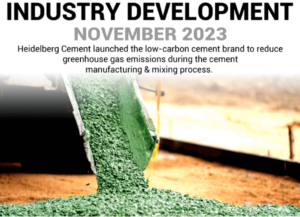
According to Fortune Business Insights, The global green cement market was valued at USD 35.65 billion in 2023 and is expected to grow from USD 39.32 billion in 2024 to USD 83.28 billion by 2032, registering a CAGR of 9.9% during the forecast period. North America led the global market with a 37.17% share in 2023. In the U.S., the green cement market is anticipated to witness substantial growth, reaching approximately USD 28.89 billion by 2032, fueled by the increasing adoption of sustainable cement alternatives in both residential and non-residential construction projects.
Green cement is an eco-friendly alternative to conventional cement, primarily produced using industrial by-products such as blast furnace slag and fly ash. Its production process is highly energy-efficient, as leading manufacturers employ advanced technologies to minimize carbon emissions. As per JK Lakshmi Cement Ltd., the use of green cement in construction can help reduce carbon footprints by up to 40%, making it a crucial component of sustainable building practices.
The global green cement market is witnessing strong growth as the construction industry increasingly adopts sustainable materials to reduce carbon emissions. Green cement, an eco-friendly alternative to traditional Portland cement, is produced using industrial waste such as fly ash, slag, and recycled aggregates. This shift supports global efforts toward carbon neutrality and sustainable infrastructure development.

The green cement market is projected to experience substantial expansion from 2024 to 2032. Rising environmental awareness, stringent government regulations on carbon emissions, and growing investment in green infrastructure projects are key drivers fueling market growth. Increasing urbanization and demand for energy-efficient buildings further accelerate adoption across residential, commercial, and industrial sectors.
The construction sector is one of the largest contributors to global CO₂ emissions. Green cement reduces carbon output by up to 30–40% compared to conventional cement, aligning with global sustainability goals such as the Paris Agreement. Governments and corporations are actively promoting low-carbon materials to meet green building certification standards such as LEED and BREEAM.
Massive infrastructure projects in emerging economies—such as smart cities, transportation networks, and renewable energy plants—are propelling demand for sustainable building materials. Green cement’s durability and low environmental impact make it an ideal choice for large-scale construction.
Continuous R&D has led to innovative formulations of green cement incorporating materials like geopolymers, rice husk ash, and silica fume. These advancements enhance product performance while minimizing clinker usage, further lowering emissions and energy consumption during production.
By Type: